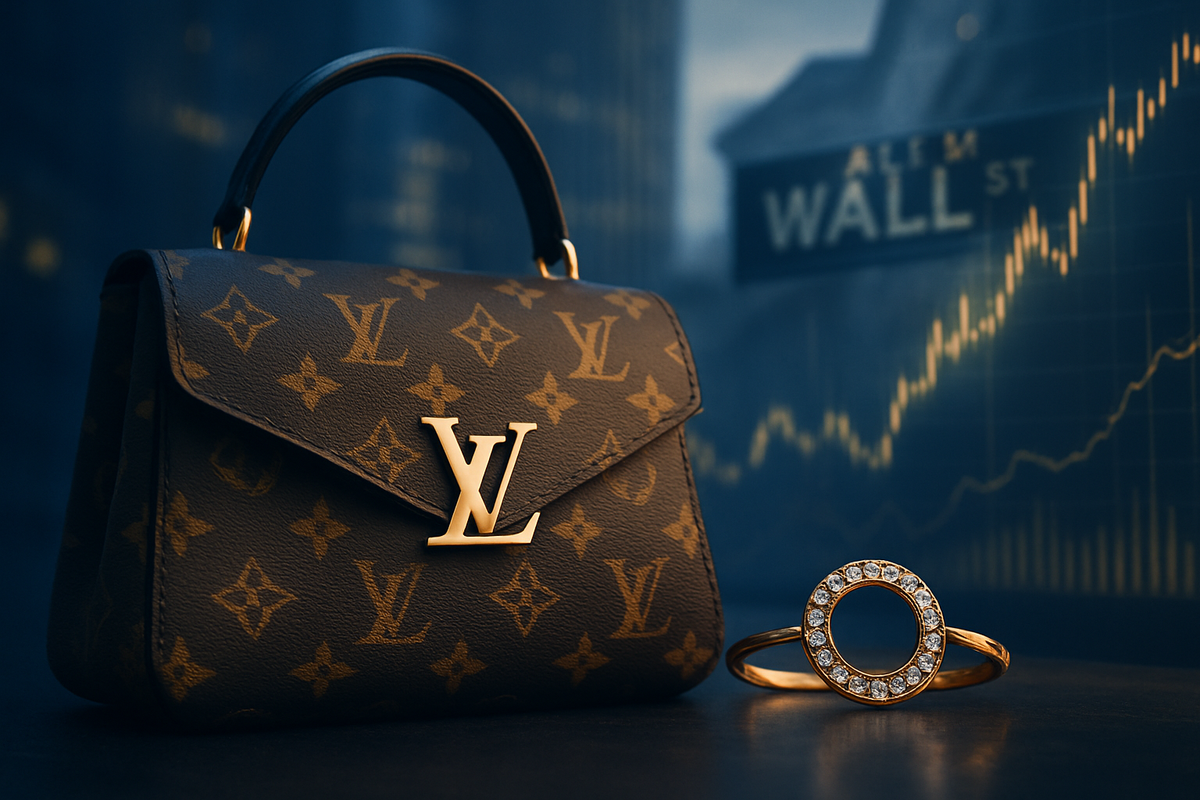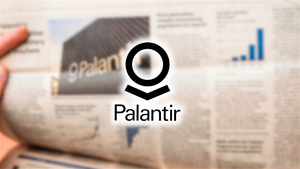
Paris, France – October 9, 2025 – LVMH Moët Hennessy Louis Vuitton (EPA: MC), the world's leading luxury conglomerate, finds itself once again at the epicenter of Wall Street's attention. After a period marked by significant macroeconomic headwinds and a discernible slowdown in key markets, the luxury behemoth has staged a notable, albeit cautious, rebound in its share price. This resurgence has ignited a fresh debate among investors and analysts: Is this a genuine turning point for the luxury sector, or merely a fleeting moment of optimism in a challenging economic landscape?
The renewed focus on LVMH comes as the market grapples with a "polarization" within the luxury industry, where brand strength and strategic agility are proving more critical than ever. Investors are keenly awaiting the upcoming Q3 2025 earnings reports for European luxury stocks, with LVMH's performance expected to provide crucial insights into the health and future trajectory of the high-end consumer market. The recent uplift in share value suggests a cautious optimism that the luxury giant's inherent brand power and diversified portfolio may allow it to navigate current uncertainties more effectively than its peers.
A Rollercoaster Year for the Luxury Behemoth
The year 2025 has been a period of mixed fortunes for LVMH. While the luxury group's stock experienced a significant rebound of over 7% in late September and early October, its year-to-date return stands at a challenging -13.0%, with a one-year slide of -14.4% as of early October 2025. This volatility reflects the broader pressures on the luxury sector, which is grappling with global macroeconomic uncertainty, persistent inflation, and geopolitical instability.
The first half of 2025 revealed a particularly challenging environment, with LVMH reporting a 4% decline in revenue and a 15% drop in profit from recurring operations. This downturn was largely driven by weakened demand in crucial Asian markets, most notably China, and a sharp reversal in tourism-driven sales in Japan. The Fashion & Leather Goods segment, which accounts for 50% of LVMH's sales and over 70% of its profit, bore the brunt of this slowdown, experiencing an 8% fall in sales during the first six months of the year. Adding to these woes, the implementation of 15% U.S. customs duties on European products and a significant 39% on Swiss goods emerged as a critical concern, projected to contract the luxury market by at least 2% by the end of 2025. Despite these headwinds, LVMH's iconic brands like Louis Vuitton and Christian Dior, alongside the improving performance of Tiffany & Co. (NYSE: TIF) and the consistent growth of its Selective Retailing segment, particularly Sephora, have shown remarkable resilience, leveraging innovation and disciplined cost management to maintain high profitability and strong cash flow generation.
Winners and Losers in the Luxury Tug-of-War
The current market dynamics surrounding LVMH have clear implications for various players within and beyond the luxury sphere.
LVMH (EPA: MC) itself stands as both a potential winner and a company facing significant tests. Its unparalleled portfolio of over 75 prestigious brands provides a robust foundation, allowing it to diversify risk and capitalize on varying consumer preferences. Segments like Selective Retailing, spearheaded by Sephora, continue to demonstrate consistent growth, offsetting weaknesses in other areas. The strength of brands such as Louis Vuitton, with its new cosmetic line and strategic partnerships, and Christian Dior, benefiting from a creative overhaul under Jonathan Anderson, ensures continued consumer allure. However, the company's reliance on the Fashion & Leather Goods segment, coupled with its exposure to volatile Asian markets and the impact of new tariffs, presents substantial challenges. Its current valuation, which some analysts deem significantly overvalued, also raises questions about its short-term investment appeal despite long-term growth prospects.
Competitors in the luxury landscape will inevitably be affected by LVMH's trajectory. Companies like Kering (EPA: KER), parent to Gucci and Saint Laurent, Richemont (SWX: CFR), known for Cartier and Van Cleef & Arpels, and Hermès (EPA: RMS), with its exclusive leather goods, are all navigating similar macroeconomic pressures. LVMH's ability to maintain margins and brand momentum despite a revenue slowdown could set a benchmark, pressuring rivals to innovate and adapt their strategies. Those with less diversified portfolios or a heavier reliance on specific struggling regions may find themselves at a disadvantage. Conversely, any sustained recovery in LVMH's performance could signal a broader rebound for the sector, benefiting all players. Suppliers to the luxury industry, ranging from high-end leather producers to specialized component manufacturers, also stand to gain or lose. A strong LVMH performance translates to robust orders, while a prolonged slowdown could impact their business significantly.
Broader Implications and Industry Shifts
LVMH's current position is a microcosm of broader industry trends and macroeconomic forces shaping the global luxury market. The "polarization" noted by analysts highlights a critical shift: consumers, particularly in an uncertain economic climate, are becoming more discerning, gravitating towards established, high-quality brands with strong heritage and perceived value. This favors luxury leaders like LVMH, which can leverage their brand equity and marketing prowess. Conversely, mid-tier luxury brands or those lacking a distinct identity may struggle to capture market share.
The ongoing macroeconomic uncertainty, characterized by inflation, higher interest rates, and geopolitical tensions, continues to dampen consumer confidence, particularly for discretionary spending. This environment underscores the resilience of the ultra-luxury segment, which often proves more insulated from economic downturns due to its affluent customer base. However, even these segments are not immune, as evidenced by the slowdown in Asia. Regulatory and policy implications, such as the U.S. customs duties on European and Swiss luxury goods, represent a significant headwind. These tariffs not only increase the cost of doing business but also create uncertainty about brands' ability to pass on these costs to consumers without impacting demand, potentially reshaping supply chains and pricing strategies. Historically, the luxury market has demonstrated cyclical patterns, often experiencing booms during periods of economic prosperity and contractions during recessions. The current situation suggests a more complex cycle, influenced by regional economic disparities and evolving consumer values.
What Comes Next: Navigating the Future of Luxury
The immediate future for LVMH and the broader luxury sector hinges significantly on the upcoming Q3 2025 earnings reports. These results will provide crucial validation or refutation of the cautious optimism currently circulating on Wall Street. A strong performance could solidify the narrative of a resilient LVMH poised for recovery, while disappointing figures might reignite concerns about the sector's vulnerability to ongoing macroeconomic pressures.
In the short term, LVMH will likely continue its strategic focus on brand strength and innovation. Expect further investments in key brands like Louis Vuitton and Christian Dior, including new product launches, experiential retail, and targeted marketing campaigns to engage discerning consumers. The continued growth of resilient segments like Sephora will be vital in offsetting any lingering weaknesses. Long-term possibilities include a gradual recovery in key Asian markets, particularly China, which is anticipated to drive a sequential sales recovery in 2026. Analysts project the Fashion & Leather Goods segment to return to low single-digit growth, with Wines & Spirits and Watches & Jewelry potentially seeing over 10% operating profit growth in 2026. Strategic pivots may involve further optimization of its global footprint, adapting to evolving e-commerce trends, and potentially exploring new acquisitions that align with its premium portfolio and growth objectives. The company will also need to skillfully navigate the complexities of tariffs and supply chain disruptions.
A Resilient Giant in a Shifting Landscape
In summary, LVMH Moët Hennessy Louis Vuitton remains a formidable force in the global luxury market, a testament to its unparalleled brand portfolio and strategic acumen. While the year 2025 has presented significant challenges, marked by macroeconomic headwinds and a slowdown in key regions, the company's recent share price rebound and the underlying strength of its core brands signal a cautious yet tangible resilience. The "polarization" within the luxury industry underscores the importance of strong brand equity and disciplined management, areas where LVMH consistently excels.
Moving forward, investors should closely monitor LVMH's Q3 2025 earnings report, which will serve as a critical barometer for the company's immediate trajectory and the broader luxury market's health. Key indicators to watch include performance in Asia, particularly China, any shifts in consumer spending patterns in the U.S. and Europe, and the impact of ongoing tariffs. While valuation concerns persist for some analysts, LVMH's long-term prospects are often viewed favorably due to its dominant market position and capacity for innovation. The luxury market is undoubtedly navigating a period of significant transformation, but LVMH's journey through these shifting tides will offer invaluable insights into the future of high-end consumption and the enduring power of brand.
This content is intended for informational purposes only and is not financial advice





